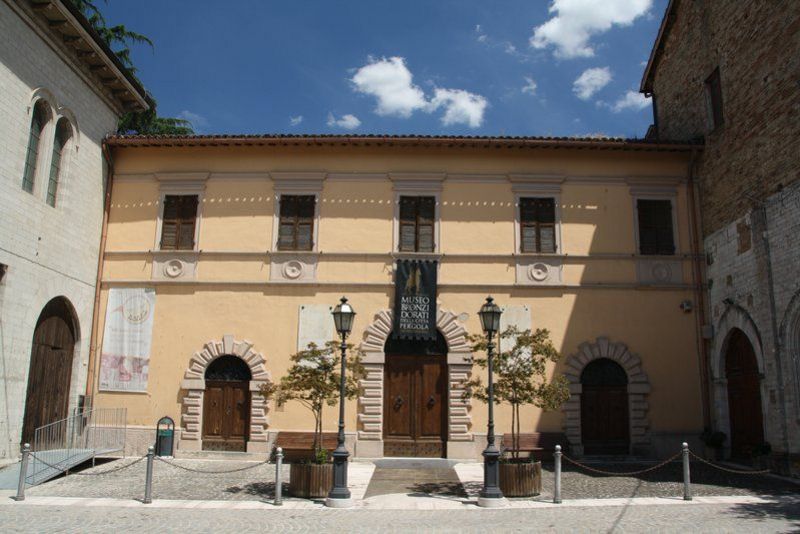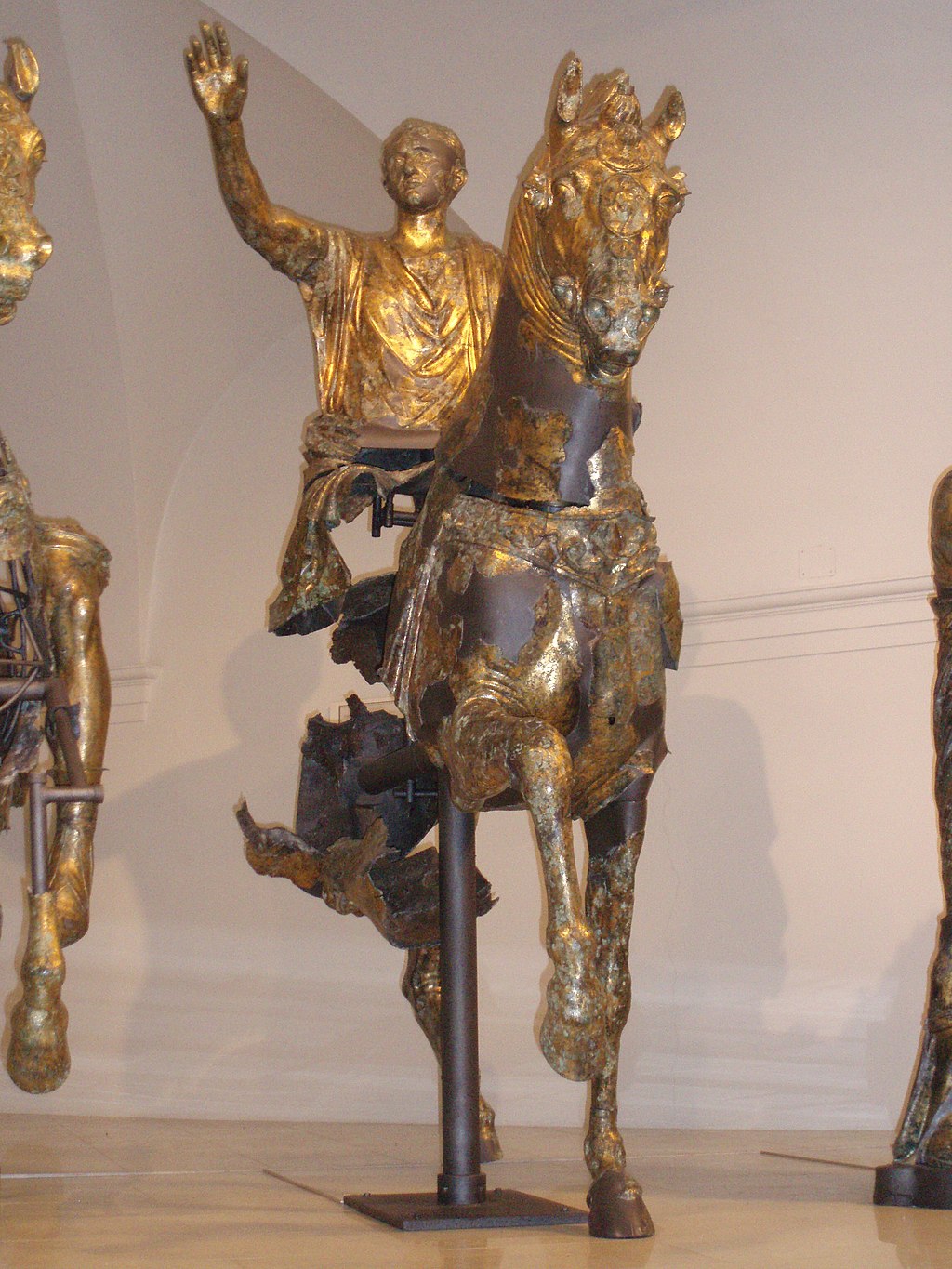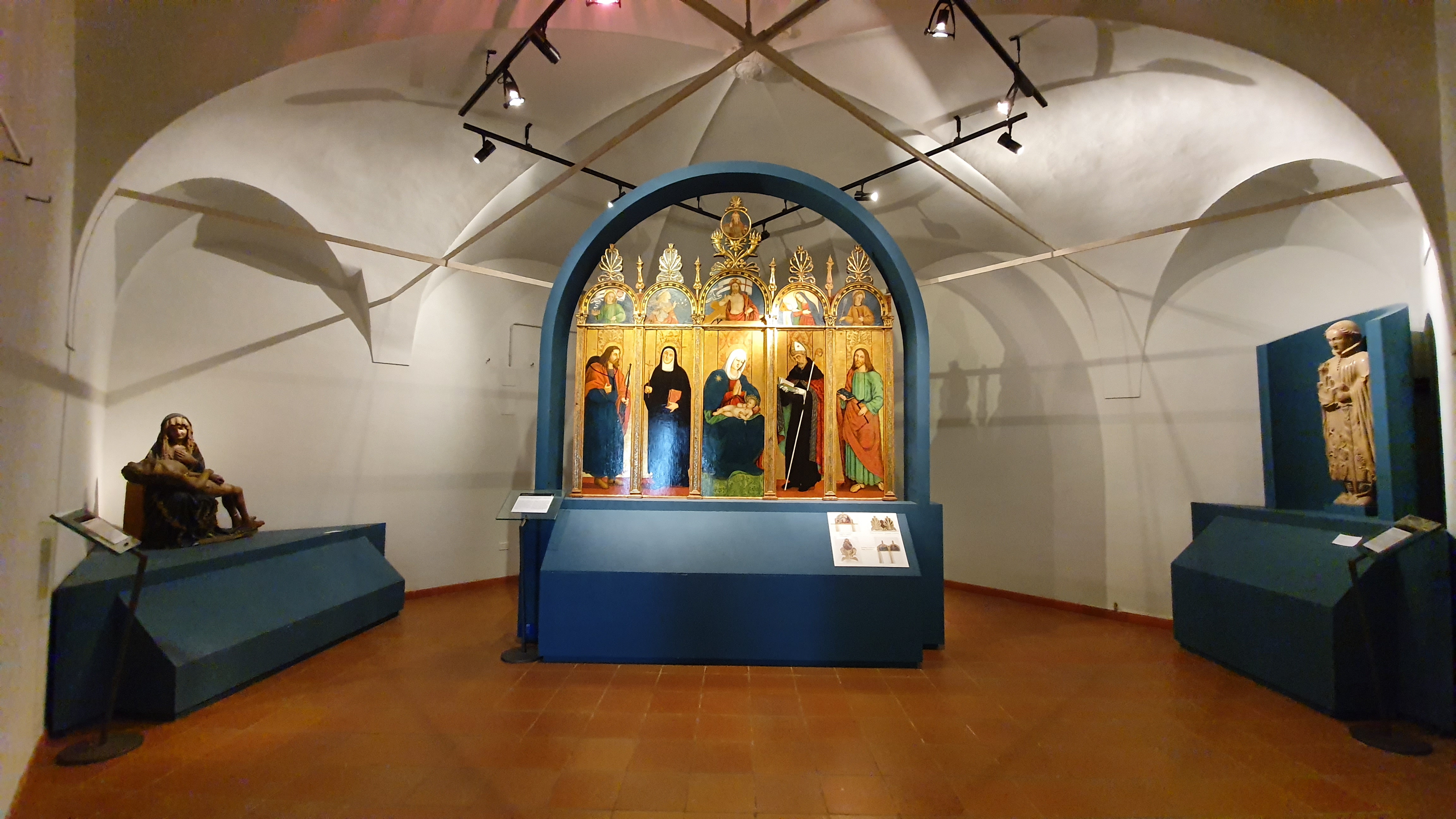

In the ex-convent of San Giacomo are the gilded bronzes from Cartoceto di Pergola, or simply gilded bronzes from Cartoceto, the Roman equestrian statuary group made up of two knights, two horses and two standing women; they represent the only gilded bronze sculptural group of archaeological origin left from the Roman era.

Hundreds of fragments of gilded bronze, weighing 9 quintals, were discovered by chance in the subsoil on 26 June 1946 in the locality of Santa Lucia di Calamello, by two farmers who were digging in their own field, located in the parish of Cartoceto, in the municipality of Pergola (PU ).
The discovery was reported to the canon Giovanni Vernarecci, honorary inspector of Fossombrone, by his niece Piera Vernarecci who, a student at the University of Urbino and fresh from her exam in History of Art, following the rumors of an archaeological find of great value, had gone on the spot, chasing fragmentary details and indications.

But everything had already been made to disappear; near an evident and fresh covering of an excavation, however, she found and picked up a small piece of gilded bronze which she brought to her uncle in the evening.
The latter went to the place the next day, together with the police, but was unable to get anything delivered. Thanks to his typed testimony we are aware of the fortunate circumstance of the discovery and its execution in a state of emergency.

Worried about the fate of the finds, Vernarecci urgently called the National Archaeological Museum of the Marches in Ancona, where, due to the post-war emergency situation, only one daily employee was on duty: the archaeologist Nereo Alfieri.
Despite the inconvenience resulting from the bombings that had partially destroyed the museum headquarters, Alfieri went to the site of the discovery and took possession of the gilded bronze fragments that had just been excavated, while the owner of the land had urgently gone to Rome; suspecting that the sudden trip was due to an intention to contact the clandestine antiques market, the employee seized the exhibits in the name of the state and managed to have other previously hidden fragments delivered.

In the meantime he warned the Carabinieri of Rome, who monitored the activity of the capital's antique dealers to prevent any illegal sale.
The first restoration was carried out by the restorer Bruno Bearzi of Florence, who for more than ten years offered his work for free just for the honor of working on such a precious monument.

The restoration turned out to be very difficult, due to the very high number (several hundred) of the fragments, and also because the pieces were intentionally deformed before being buried.
In 1959, after the restoration by Bearzi, it was finally possible to exhibit the bronzes at the National Archaeological Museum of the Marche, where they remained visible until 1972.

From 1972 to 1988 the gilded bronzes underwent a second restoration, by the restoration laboratory of the Superintendency of Antiquities of Florence; this made it possible to integrate numerous other previously unassembled fragments into the statues, up to the recomposition of 318 fragments into the four characters, two males on horseback and two females standing.

At the end of the restoration, after being exhibited for six months at the Archaeological Museum of Florence, the gilded bronzes were once again on display at the National Archaeological Museum of the Marches, but this time no longer as individual pieces, but as a single statue group.
By now it was clear that they represented the only gilded bronze sculptural group left from the Roman era.
Gilded Bronzes Museum from Cartoceto di Pergola
Address: Largo San Giacomo, 1, 61045 Pergola Marche Italia
Phone: 0721734090
Site:
https://www.bronzidorati.com/Location inserted by
Culturalword